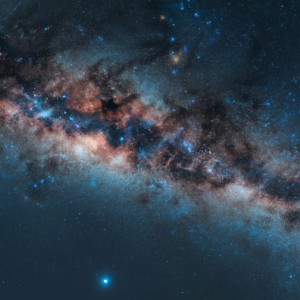As people explore the vastness of the universe, they discover that it is comprised of a stunning array of celestial bodies and phenomena. From stars and galaxies to black holes and supernovae, the universe is truly a marvel of creation. While the universe is incredibly diverse, there are also some key similarities and commonalities that can be observed among its various components.
One of the most fundamental commonalities in the universe is the presence of matter. All of the objects in the universe, from the smallest subatomic particles to the largest galaxies, are made up of matter, which is composed of atoms and molecules. These atoms and molecules come in different combinations to create different elements, resulting in a vast variety of objects and substances in the universe.

Another important commonality in the universe is the presence of energy. Energy is a fundamental quantity that exists throughout the universe in various forms, including radiation, heat, and light. The universe is constantly generating and transforming energy, with stars and other celestial bodies serving as powerful sources of energy.
The universe is also home to various physical laws and principles that govern the behavior of matter and energy. These laws, such as the laws of thermodynamics and gravity, are universal and apply to all objects in the universe, regardless of their size, composition, or location. These principles are what make it possible for scientists to study and understand the universe, as they provide a predictable framework within which the universe operates.
Despite its vastness and complexity, the universe also exhibits some striking similarities on a cosmic scale. For example, many galaxies throughout the universe demonstrate a similar spiral shape. These spirals are a result of the way that matter and energy flow through space, gravitating towards the center of the galaxy and creating a rotational pattern.
Additionally, many celestial objects in the universe, including stars, exhibit cycles of birth, growth, and death. These cycles are driven by the inexorable forces of the universe, such as gravity and nuclear fusion. Over time, these processes work to create new stars and galaxies, while also transforming or destroying existing ones.
Finally, the universe also exhibits a sense of interconnectedness, as all of its components are in constant communication with each other. Celestial objects are connected by gravity, as each object's mass and position influence the positions and movements of other objects in its vicinity. Additionally, the universe is constantly emitting and absorbing energy, with light and radiation flowing through the universe and connecting objects that may be billions of light years apart.
In conclusion, although the universe is incredibly diverse, it also exhibits some fundamental similarities and commonalities that are essential to its functioning and structure. The presence of matter and energy, the laws and principles that govern the universe, and the interconnectivity of all its parts are just a few examples of the many ways that the universe is bound together by a shared set of rules and principles. By exploring and studying these commonalities, scientists can continue to expand their understanding of the universe and uncover more of its mysteries.













评论